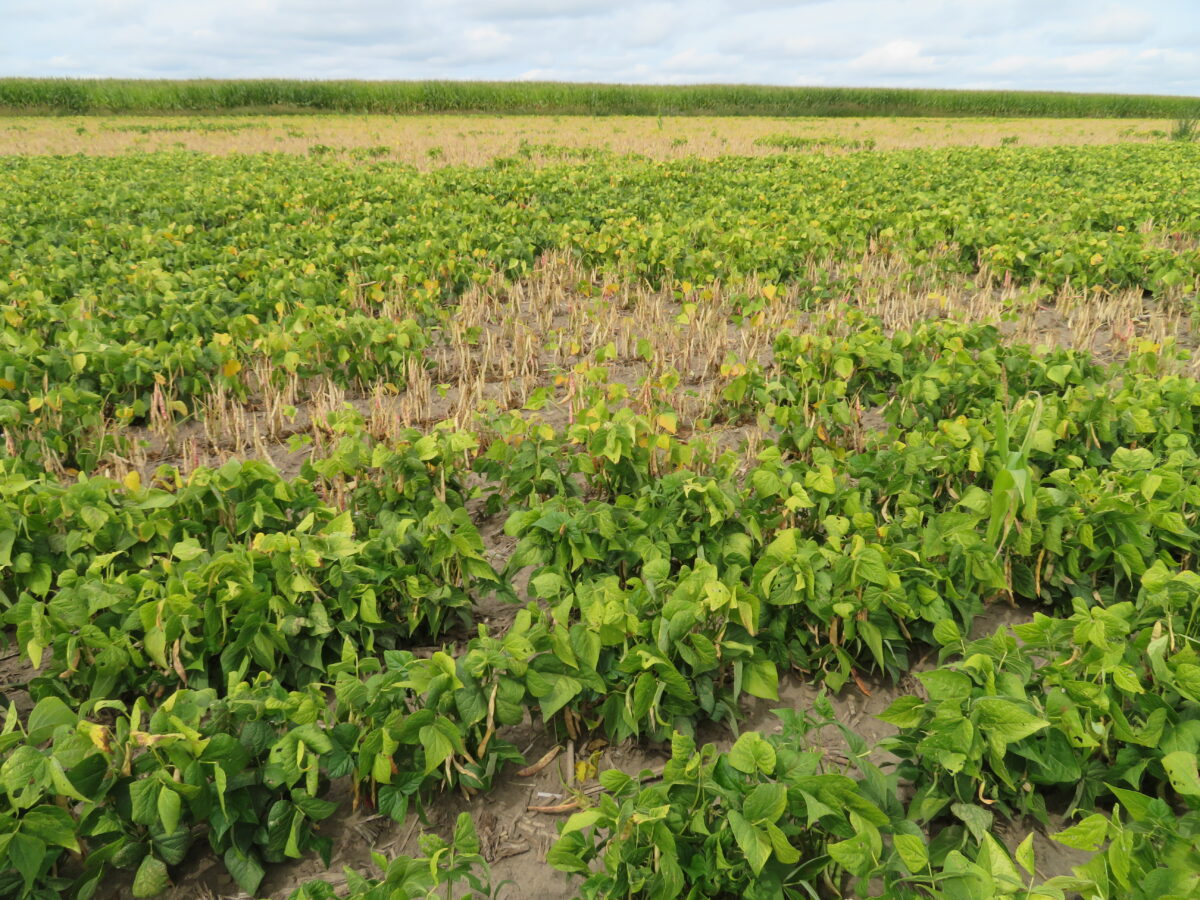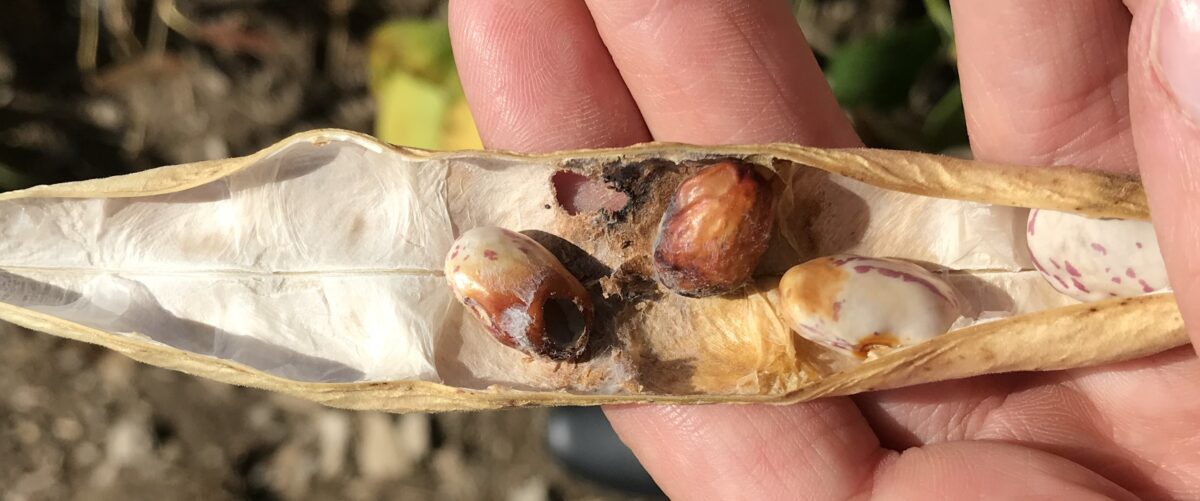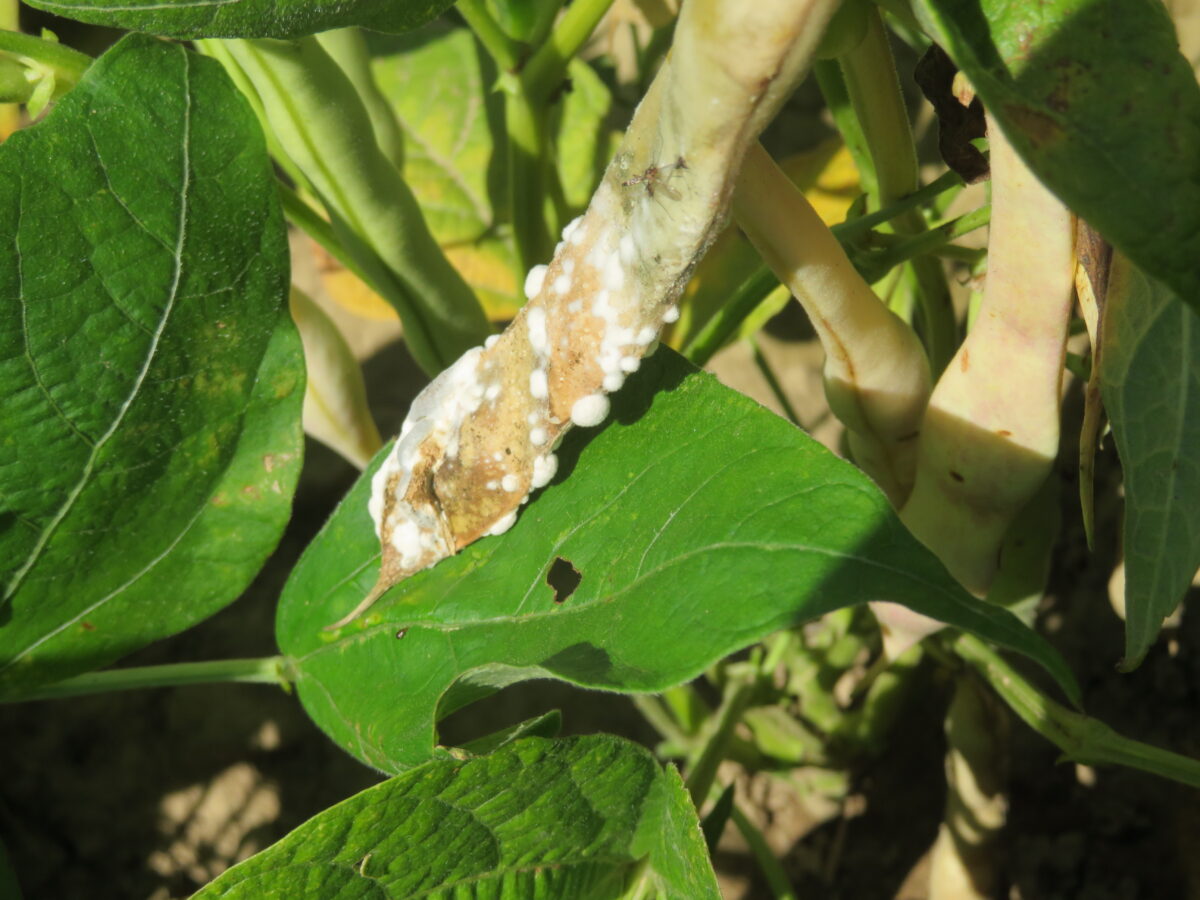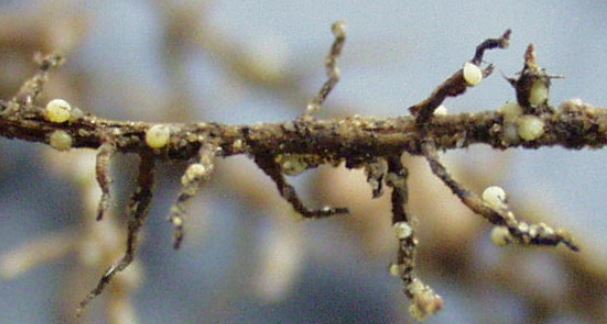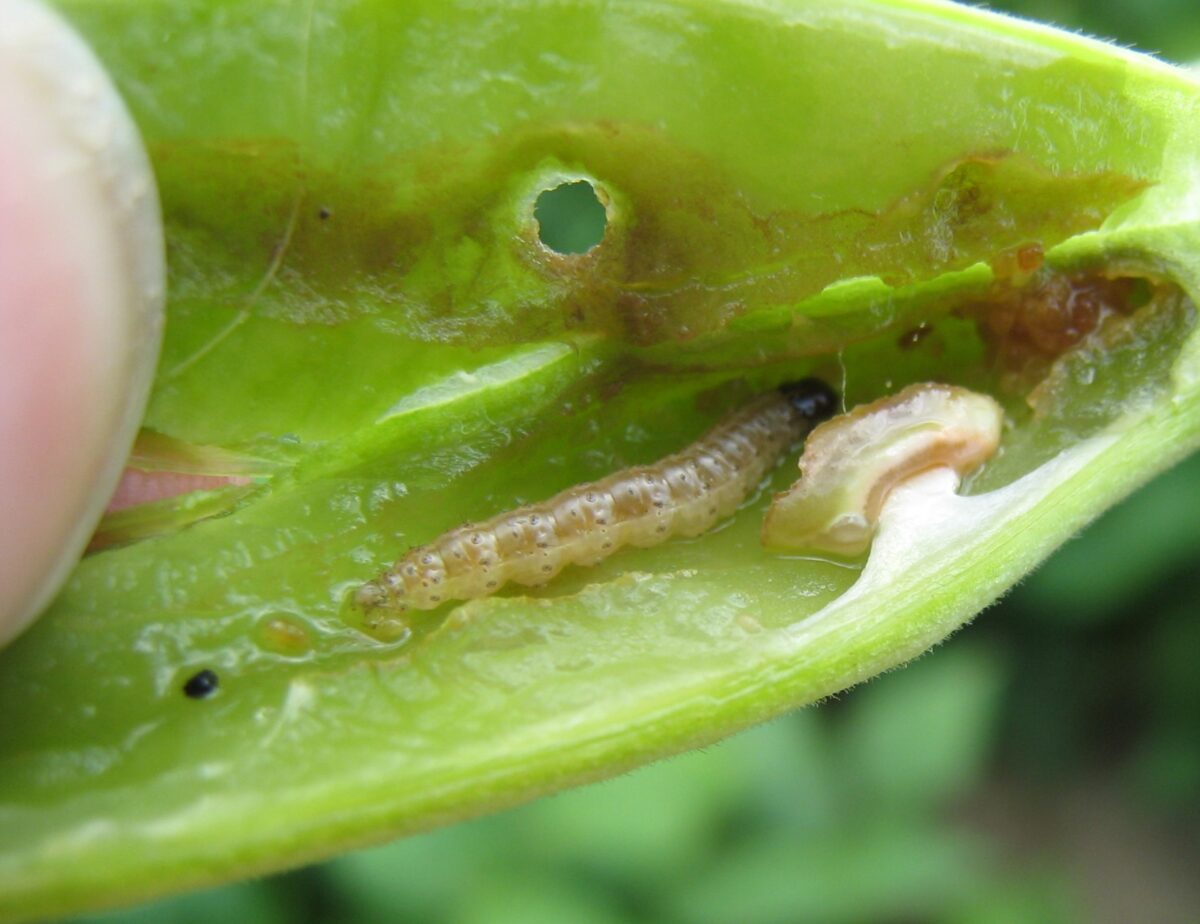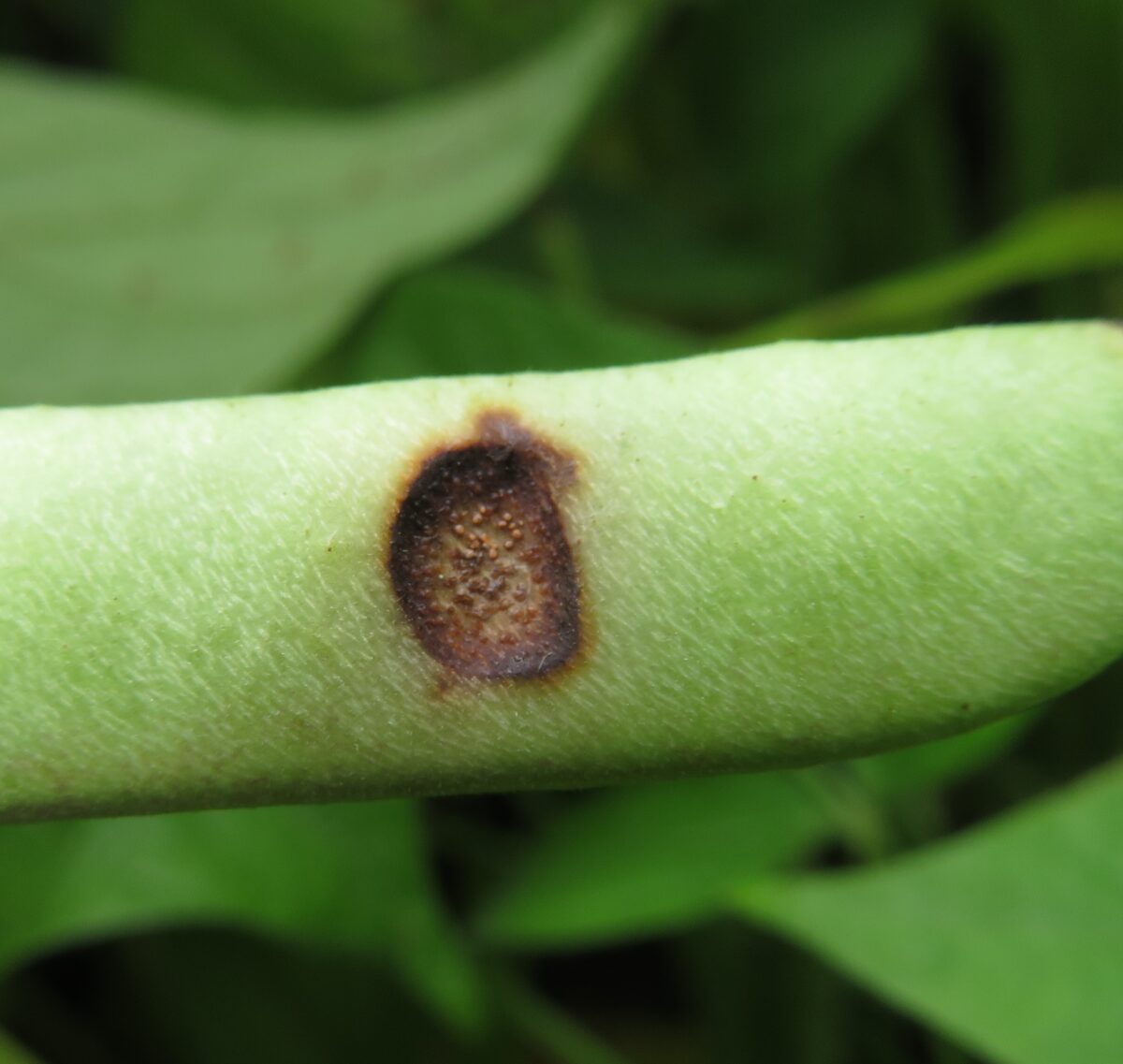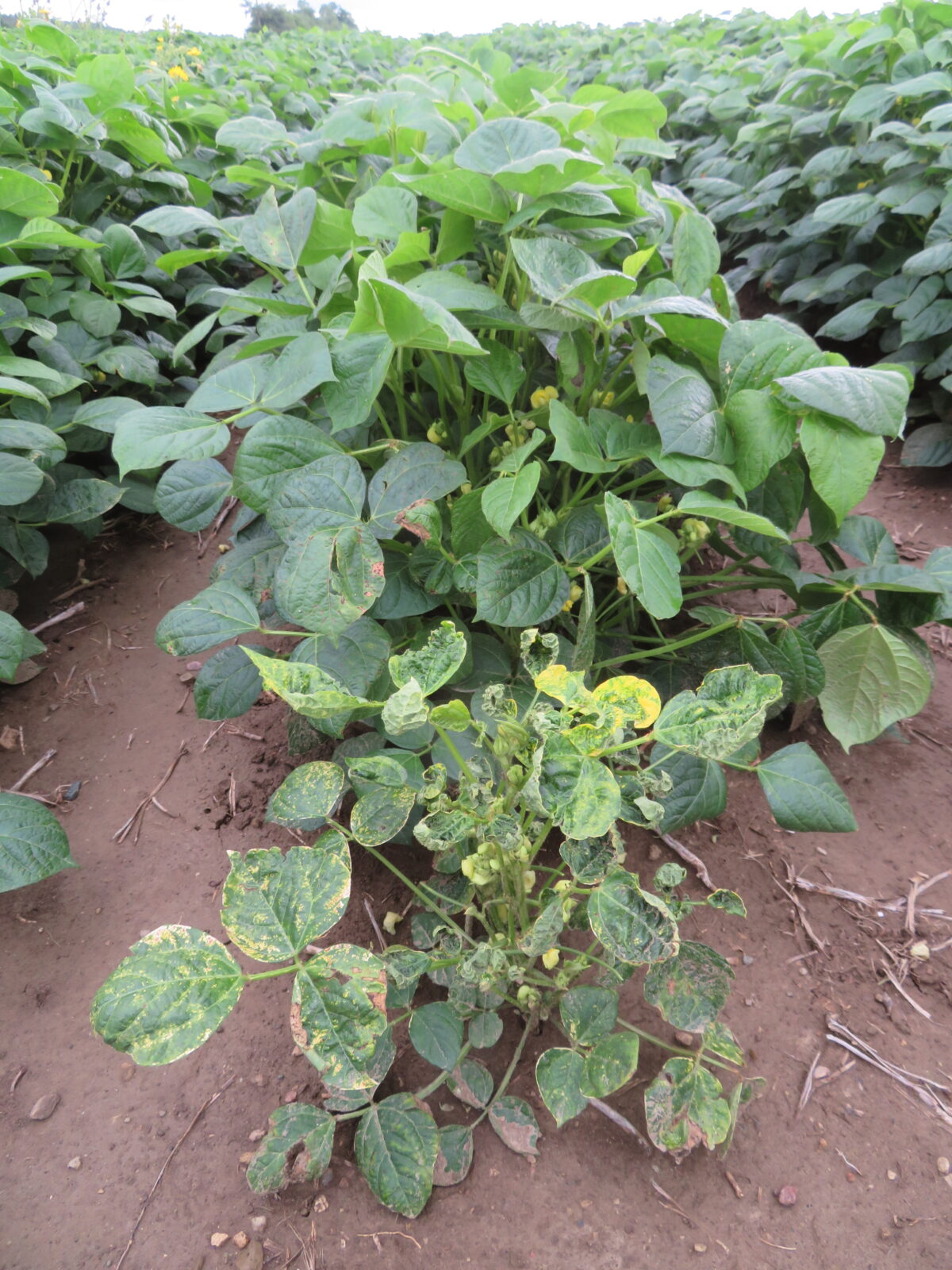Green Patch, sometimes called “crazy beans”, is a syndrome occurring in Ontario dry beans for which a cause has not been identified. It is so called because at harvest time when most plants are maturing and drying down, patches will remain green and growing. The greenness of plants is not in itself a major concern,…Continue readingGreen Patch
Western Bean Cutworm Quick Guide
This article is intended to briefly answer questions surrounding WBC in Ontario dry beans. More comprehensive information can be found in the OMAFRA Infosheet on WBC or in other WBC articles on this website. You can also check FieldCropNews.com for timely updates or follow @TraceyBaute and @megnmoran on Twitter. Where are they in Ontario? Western…Continue readingWestern Bean Cutworm Quick Guide
White mold is an important disease of dry beans in Ontario and in-crop management of white mold occurs during flowering. White mold spores can land on stems, leaves or pods but deteriorating flower petals are very susceptible to infection. Spores colonize flower tissue, and the disease enters other healthy plant tissues when infected flower petals…Continue readingWhite Mould: In-Crop Disease Development and Management
White Mould
White Mould (Sclerotinia sclerotiorum) Incidence White mould is a difficult disease to predict, although most years the appearance of the disease is higher in dry edible beans than in soybeans. The disease is most damaging when cool (moderate), wet conditions occur during flowering or near harvest. Appearance Initial infection takes place on plant tissue such…Continue readingWhite Mould
Soybean Cyst Nematode (SCN)
Soybean Cyst Nematode (Heterodera glycines) Although soybeans are the major host, soybean cyst nematode (SCN) has a wide range of hosts that includes dry edible beans. SCN has been increasing in edible bean-producing areas of the province. Planting dry edible beans into SCN-infested fields can result in an increase in root rot complex infection, since…Continue readingSoybean Cyst Nematode (SCN)
There has been a huge amount of focus on dry bean breeding dealing with resistance towards common bacterial blight (CBB) caused by the seed borne bacteria Xanthomonas axonopodis pv. phaseoli (Xap) and X. fuscans pv. fuscans (Xff). This bacterium is controlled through the use of certified seed, however the bacteria can overwinter on crop debris…Continue readingBacterial Brown Spot Observations in Ontario Dry Beans (2019)
Mexican Bean Beetle
Photo credit: Tracey Baute Mexican Bean Beetle (Epilachna varivestis) Description Mexican bean beetle infestations are rare in Ontario. Mexican bean beetle is the only member of the lady beetle family in Ontario that feeds on plants. All the other lady beetles are beneficial predacious insects. The adult beetles are oval in shape, approximately 6 mm (0.25…Continue readingMexican Bean Beetle
European Corn Borer
Photo credit: Tracey Baute European Corn Borer (Ostrinia nubilalis) Description European corn borer (ECB) egg masses are fat, creamy white and layered over each other, making the egg mass appear similar to fish scales. Mature larvae are creamy white to pale grey with two small spots per abdominal segment, approximately 2.5 cm (1 in.) in length…Continue readingEuropean Corn Borer
Anthracnose
Anthracnose (Colletotrichum lindemuthianum) Incidence Anthracnose is a significant and important dry edible bean disease in Ontario and has been managed with resistant varieties, clean seed and seed treatments. In fields where the disease does develop, as a result of new strains of fungus or from the use of infected seed, significant damage can occur. Appearance…Continue readingAnthracnose
Alfalfa Mosaic Virus
Description Alfalfa mosaic virus (AMV), also known as Lucerne mosaic virus or Potato calico virus, can infect over 600 plant species in 70 different plant families, inlcuding dry beans, soybeans, peas, alfalfa, potato, peppers, sow thistle, vetch, nightshades, annual medic species, and clover species, to name a few. Transmission can occur on seed, but in Ontario dry…Continue readingAlfalfa Mosaic Virus
